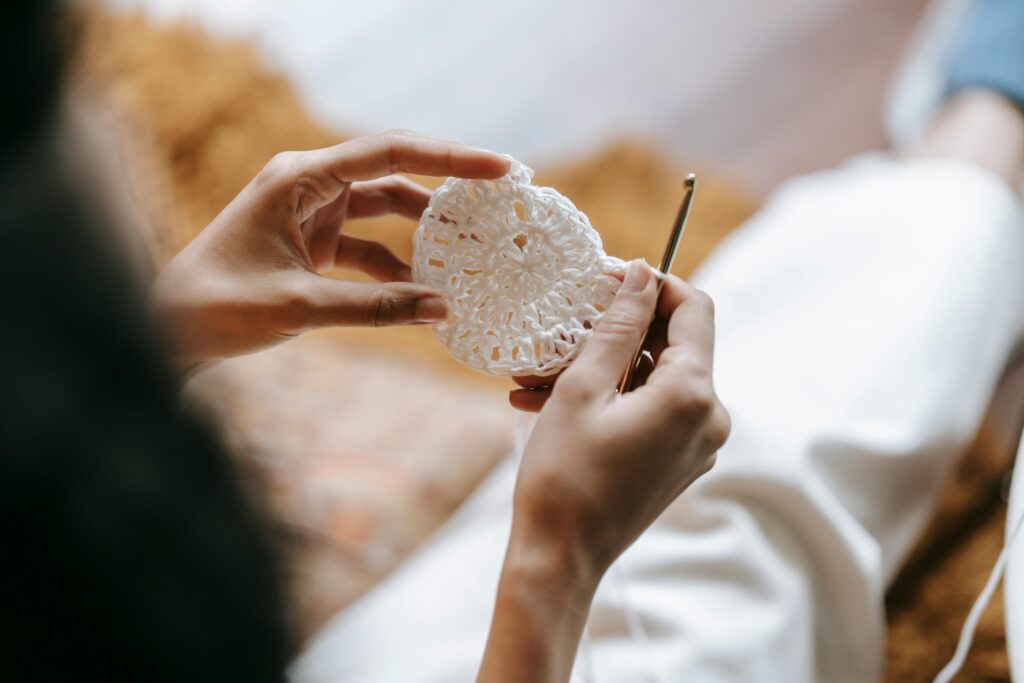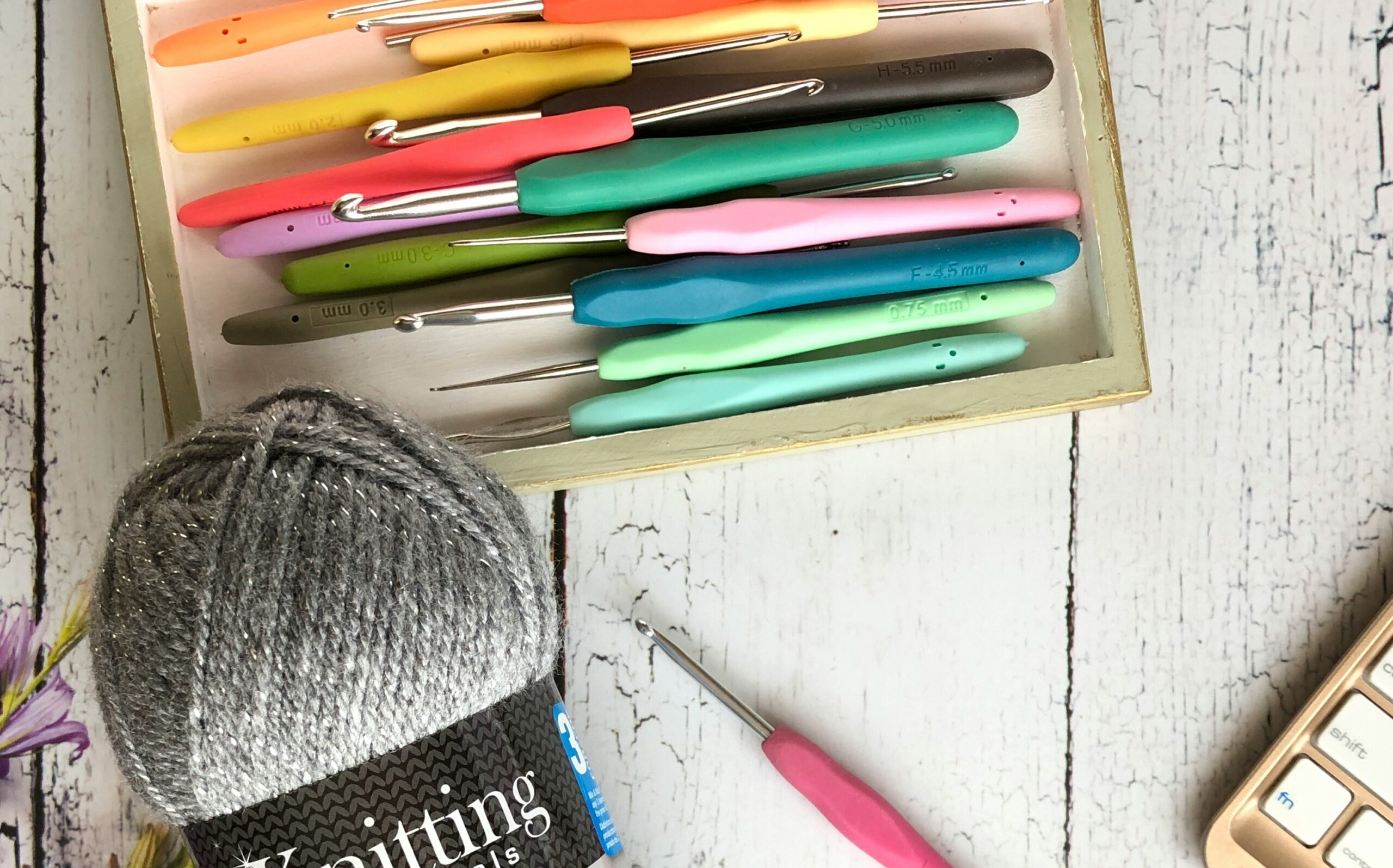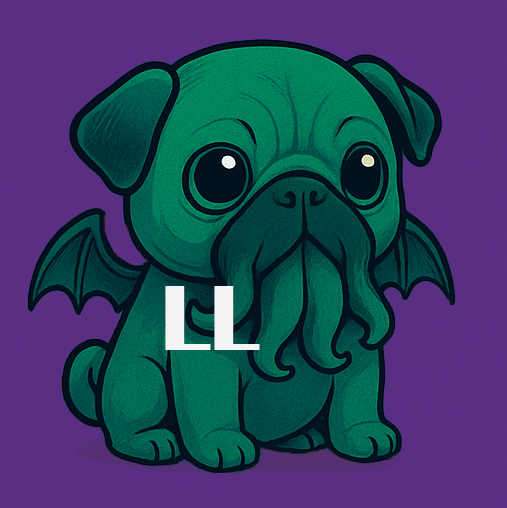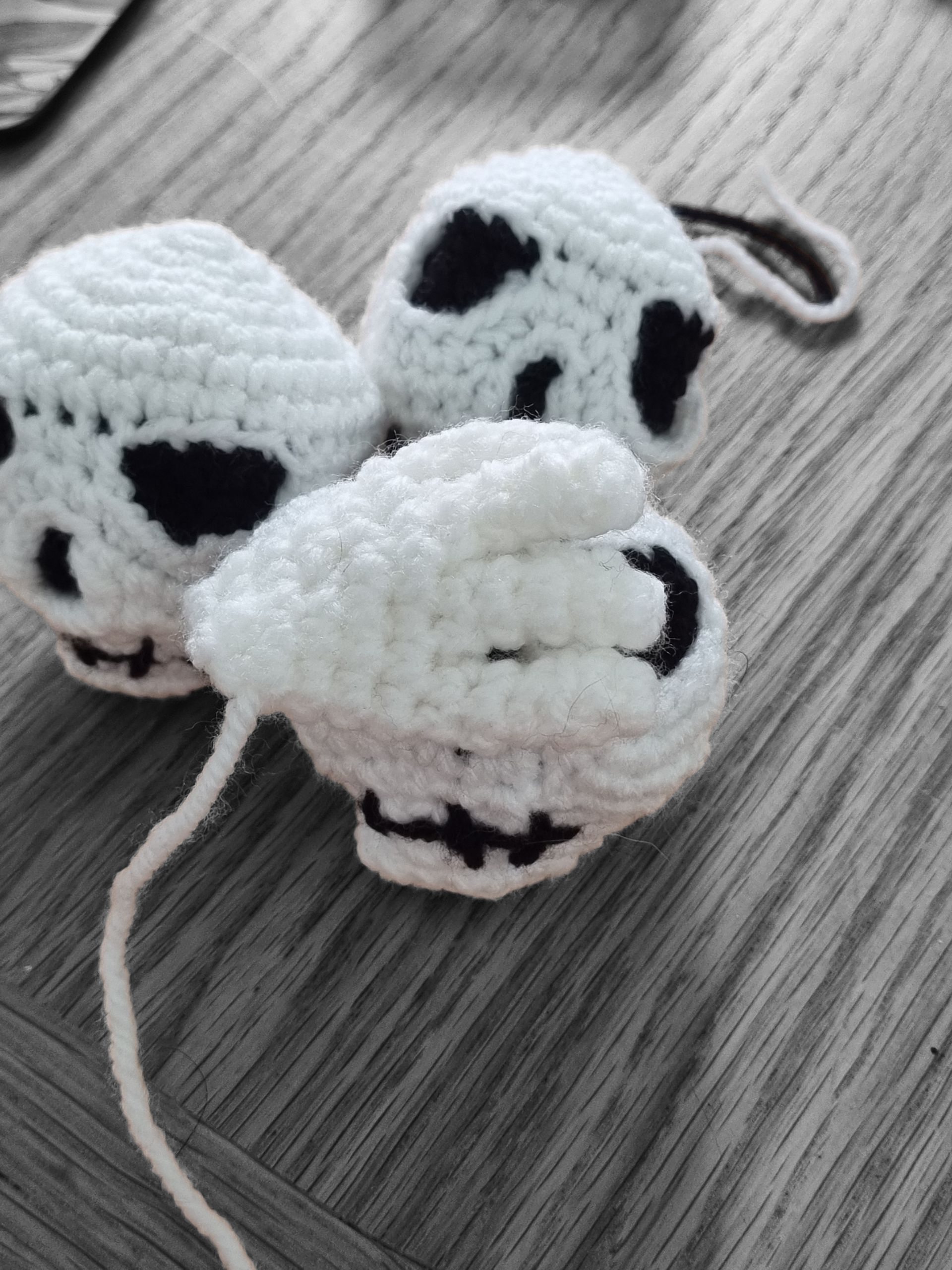
Whether you’re brand new to crochet or looking to upgrade your tools, choosing the right hook makes a huge difference. With so many types out there—different shapes, sizes, and materials—it can feel a bit overwhelming at first. But don’t worry! I’ve put together this friendly guide to help you understand your options and find the hook that feels just right in your hands.
Types of Crochet Hooks by Size
Crochet hook sizes directly affects the size of your stitches—and ultimately, your project’s overall look and feel. They are measured in millimetres(e.g. 4mm) or may include abbreviations such as G/6 for US terms. Smaller hooks produce tighter and denser stitches, these are ideal for detailed work like amigurami, whilst larger hooks create looser, softer stitches—perfect for blankets, scarves, or pet projects. The size of your hook also impacts your gauge, which is how many stitches and rows fit within a measured space (usually 4 inches or 10cm). Getting the right gauge is important for patterns where size matters, like garments or fitted pet wear, so always check your gauge with a quick swatch before diving into a new project.
🧠 Tip: Most yarn labels have a little recommended size icon—always a great starting point!

Types of Crochet Hooks by Material
Each hook material has its own feel, grip, and glide. Here’s a breakdown of the most common types:
✨ Aluminum Hooks
Aluminium crochet hooks are a popular choice for beginners and experienced crafters alike. They’re lightweight, smooth, and allow the yarn to glide easily, making them great for fast and consistent stitching. Many brands offer them with or without ergonomic grips, and they come in a wide range of sizes. Aluminium hooks are especially handy for projects using medium-weight yarns, and they’re durable enough to last for years. Just be mindful that they can feel a bit slippery with some yarns—so if you’re just starting out, pairing them with a slightly grippy yarn like cotton can help you get the hang of it.
Pros: Lightweight, smooth, great for fast crocheting
Best For: Beginners, anyone who likes speed
Feels Like: Sleek, quick, and a bit cool to the touch
Watch out for: Yarn slipping too easily if you’re just starting
📌 Lizilou’s Pick: Clover Amour Aluminum Hooks – comfy grips with a smooth hook!
🌿 Bamboo or Wood Hooks
Wooden crochet hooks are a warm, natural option that many crafters find comfortable and calming to use. They tend to have a bit more grip than metal hooks, which makes them ideal for working with smooth or slippery yarns like cotton or bamboo. The texture can help keep your stitches even, and they’re gentle on the hands—great for longer crochet sessions. Each wooden hook has its own unique grain and feel, especially if it’s hand-carved, adding a lovely handmade charm to your toolkit. Just be sure to store them carefully, as they can be more delicate than metal hooks and may warp or splinter if not looked after.
Pros: Warm, natural feel, gentle on hands
Best For: Slippery yarns like cotton, mindful crocheting
Feels Like: Soft and slightly grippy
Watch out for: Can wear down with time or split if poorly made
Great for eco-conscious crafters or those with wrist pain!
🌈 Plastic Hooks
Plastic crochet hooks are lightweight, budget-friendly, and often come in bright, fun colours—making them a great choice for beginners or casual crafters. They’re especially useful for working with chunky yarns, as plastic hooks are often available in larger sizes that glide easily through thick fibres. While they don’t have the same smoothness as metal or the natural grip of wood, they strike a nice balance and are gentle on the hands. Some plastic hooks can feel a little flimsy with tight tension, so sturdier brands or reinforced designs are worth considering if you crochet often or prefer firmer control.
Pros: Affordable, colourful, lightweight
Best For: Beginners, chunky yarns
Feels Like: Light and flexible
Watch out for: Warping over time or breaking with tight tension
Fun for kids or starter kits!
Ergonomic Crochet Handles

This is where things get personal—literally. The shape of a hook’s handle can make a huge difference, especially if you crochet often or have joint pain.
Ergonomic crochet hook handles are designed with comfort in mind, especially for those who crochet for long stretches or deal with wrist or hand pain. These handles are usually made from soft rubber, silicone, or cushioned plastic, and shaped to fit more naturally in your hand. Many crocheters say switching to ergonomic handles completely changed their hook experience.
Tapered vs Inline Hook Tips
When it comes to crochet hook shapes, you’ll hear about inline vs tapered hooks—terms that refer to the shape of the hook head. Inline hooks (like Susan Bates) have a hook head that’s level with the shaft and a deeper, sharper groove, which can help with consistent stitch size and control. Tapered hooks (like Clover) have a more rounded head and a smooth, sloped throat, allowing for quicker, fluid movement between stitches. Whilst it comes down to personal preference, it also may depend on how you hold your hook.
How to hold your Crochet hook
Whilst there is no one “right” way to hold a crochet hook, the two most common methods are the knife grip and the pencil grip. In the knife grip, you hold the hook like you’re holding a dinner knife, with your hand resting over the top. This grip gives you a firm hold and is great for strong, controlled movements. The pencil grip, on the other hand, mimics how you’d hold a pencil—grasping the hook between your thumb and index finger—which many find more relaxed and delicate.
People with a knife grip seem to find tapered hooks more comfortable, and pencil grips find inline hooks more comfortable.

Getting fancy with Light up Hooks
Light-up crochet hooks are a fun and functional tool, especially handy for crocheting in low-light settings. These hooks have a small LED light built into the tip that gently illuminates your stitches, making it easier to work with dark yarns or intricate patterns. They are typically made from a clear plastic to let the light shine through, and have a selection of replaceable heads of different sizes. I own a couple of different types and would say they can be helpful, but I’m not completely satisfied with the ones I have.
A Note for Pet Lovers
If you crochet around pets (hi, fellow dog mums and cat dads!), you might want to consider the following:
- Choose hooks that don’t roll (flat handles = less chasing under sofas)
- Keep hooks away from chew-happy pups, especially your wooden ones.
- Store hooks safely as they can look like toys to pets!
Final Thoughts
Crochet is meant to be joyful, not stressful—so don’t worry if you don’t find your favorite hook right away. Most of us go through a few different types before landing on the one that just feels right.
Start simple, and let your preferences grow as your skills do. 🧶
Until next time, happy hooking! 🪝🐾
— Lizilou @ Liziloulovecraft





Leave a Reply